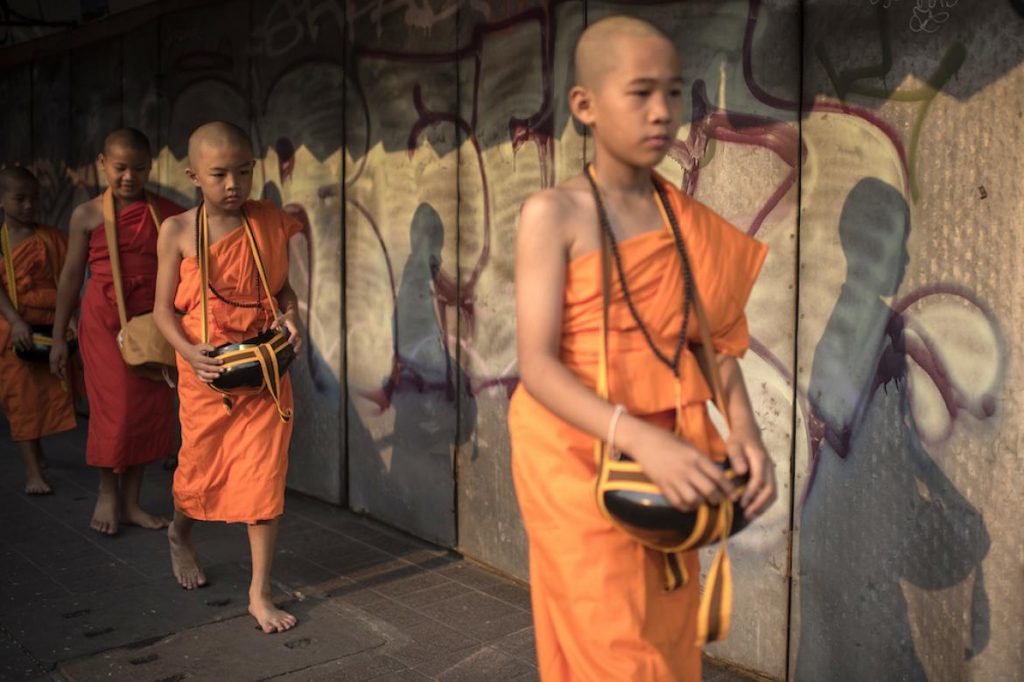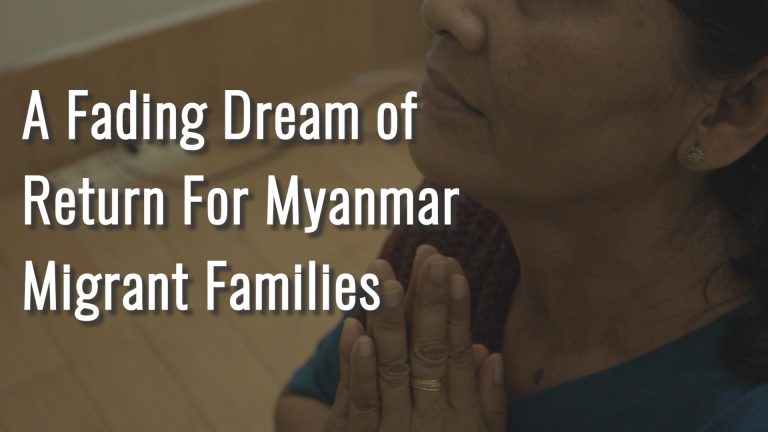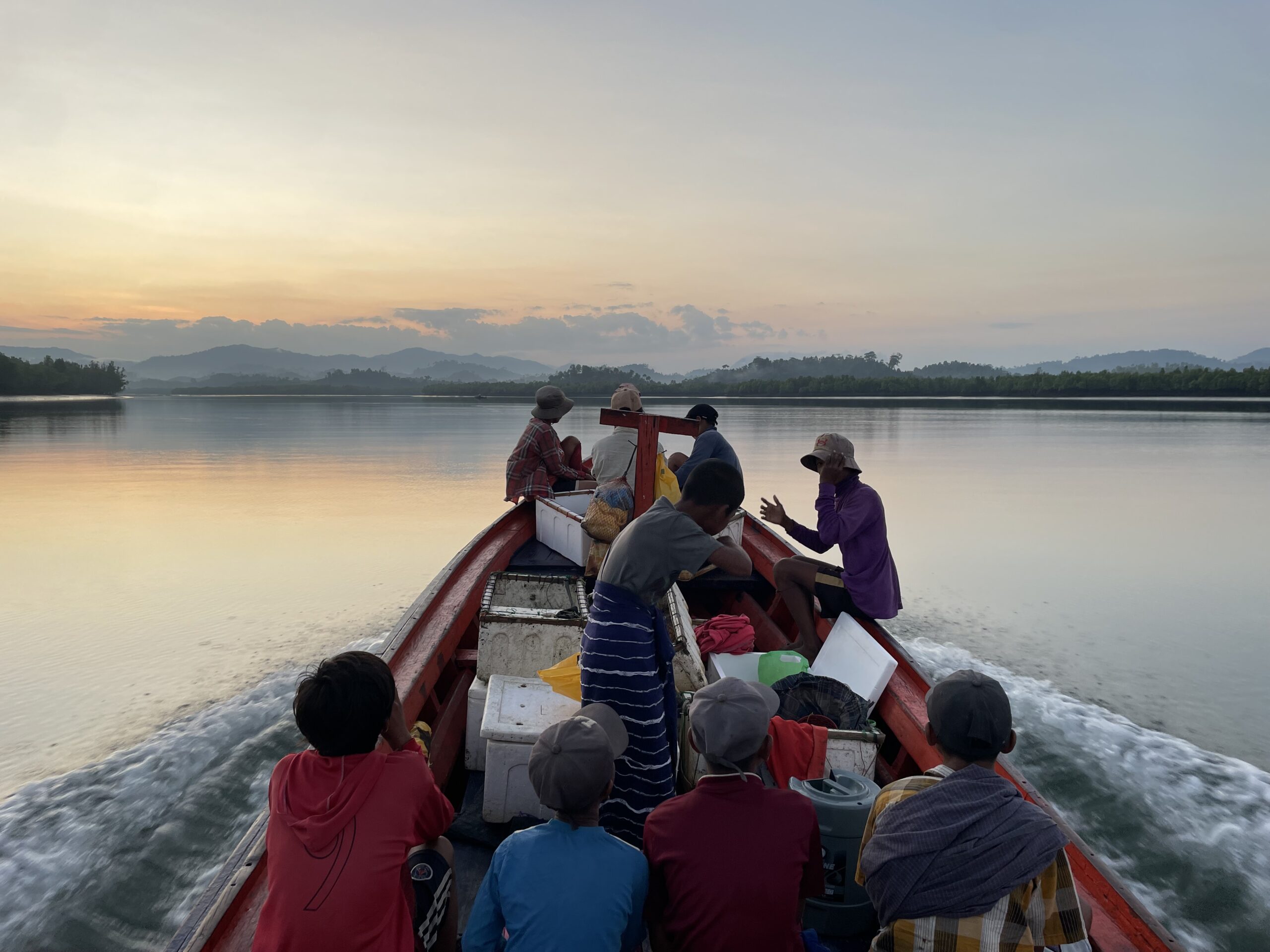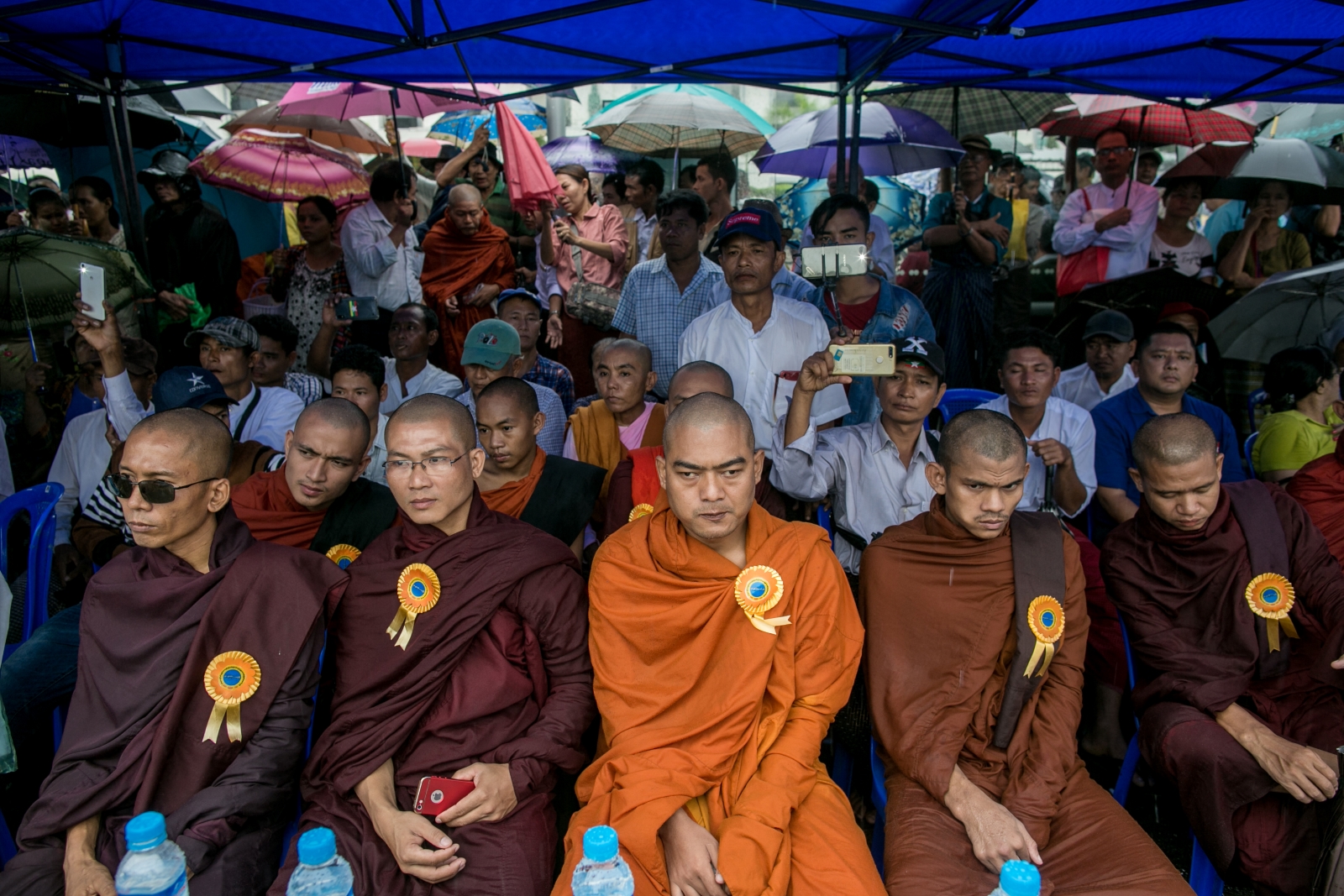Thousands of Shan people converge on Chiang Mai each year for an auspicious, exuberant Buddhist rite of passage in which young boys are ordained as novice monks.
Words & Photos VINCENZO FLORAMO | FRONTIER
In the first week of April, thousands of Shan converge on a temple in the northern Thai city of Chiang Mai for one of the most important traditional ceremonies on the ethnic group’s Buddhist calendar.
During the colourful three-day Poy Sang Long ceremony, hosted at a temple known as Wat Pa Pao, dozens of young Shan boys are ordained as novice monks.
According to sacred texts, this ancient ritual was begun by the first Buddhist “novice”, Prince Rahula, the son of the Lord Buddha, who relinquished a lavish lifestyle to follow his father’s teachings.
Shan migrants, known in Thailand as Tai Yai, have brought the three-day ceremony from Myanmar, where they are the biggest ethnic group after the majority Bamar.
shan_def_002_4.jpg
Support more independent journalism like this. Sign up to be a Frontier member.
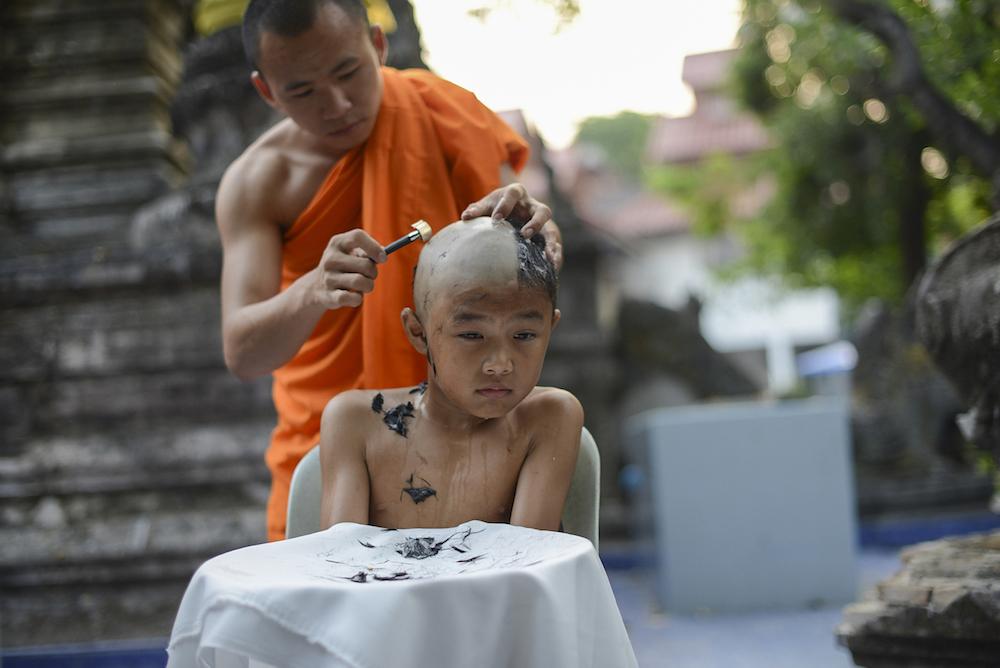
A novice Shan monk takes part in a head shaving ritual. (Vincenzo Floramo / Frontier)
The boys and their parents earn merit from this act of devotion, during which the novices will study Buddhist precepts and learn the dozens of rules of discipline and deportment that apply to the monkhood.
Frontier spent the three days of this year’s festival with one of the novices, Maung Pau Son Kula, 9, and his family.
Under the shade of a tent in the temple courtyard, Pau Son Kula’s relatives spent the three days receiving guests, cooking, serving drinks and meals and preparing the young novice for daily rituals.
Pau Son Kula’s parents invited 700 guests, some of whom helped with organising the ceremony. “I am very happy because during Poy Sang Long I will meet family members I have not seen for a year,” said U Sailon, 34, Pau Son Kula’s father, who migrated to Thailand from southern Shan State 16 years ago.
shan_def_001.jpg
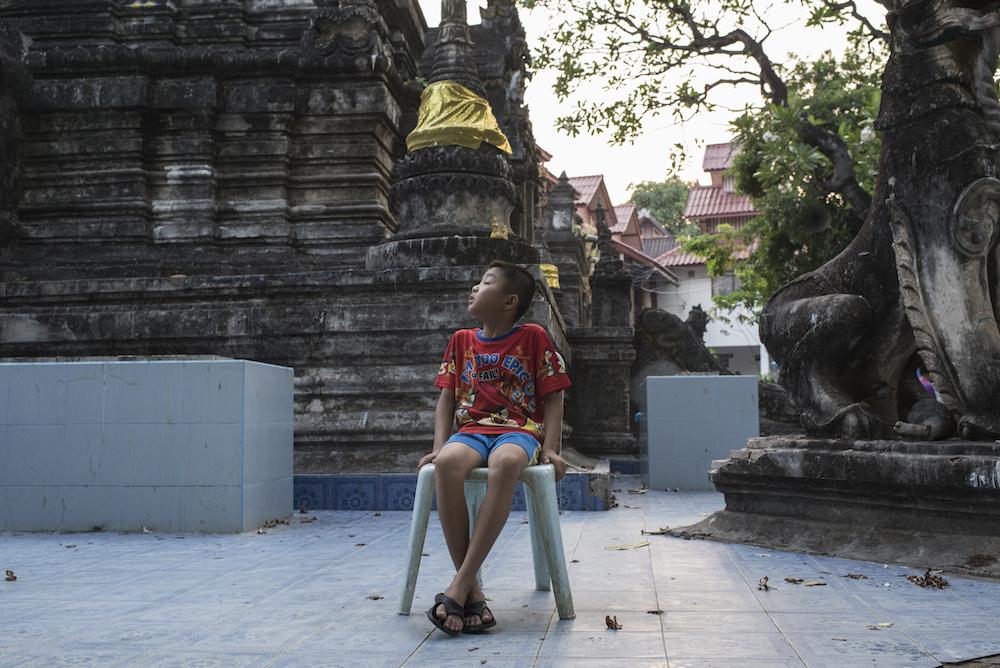
After the initiate’s head has been shaved on the first day of the festival, he cannot stand on the ground until he is ordained. He must be carried, usually by a family member, until the final ceremony on the third day.
Regardless of what the novice does, whether going to the toilet or joining a ceremonial parade, he will be carried on someone’s shoulders, when he is not sitting on a chair. He can only stand on his bed, placed under the tent, or inside the monastery.
On the first day, the novice is the focus of family feasting. After his head is shaved he is dressed and made-up to resemble a prince. In the morning, the first parade starts at the temple. The novice is carried by an attendant and followed by another two – one with a tall umbrella to shelter the boy from the sun and the other carrying his jewellery. The procession of novices parades around the main temple building, accompanied by musicians playing drums and cymbals.
In the afternoon the parades continue at the main Buddhist temples in Chiang Mai to which the future novice monks travel by car. At their destinations they circumambulate the pagodas three times and pay their respects to the temple’s abbot.
shan_def_012.jpg
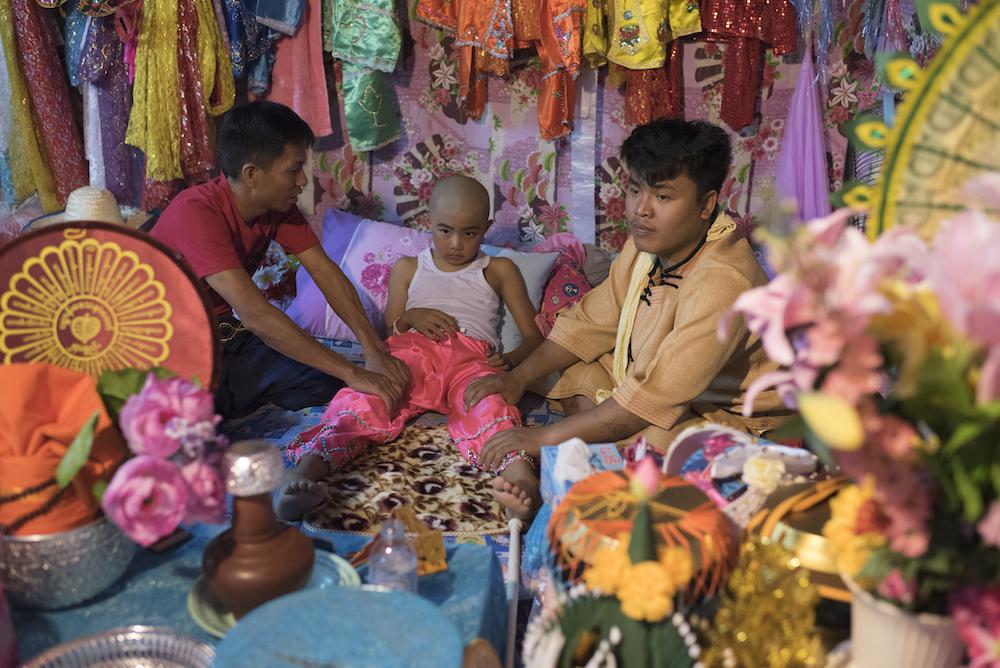
Vincenzo Floramo / Frontier
On the morning of the second day, the initiates follow the Chiang Mai mayor in a colourful, joyful street parade that includes the historic city’s North Gate and the busy, touristy Tapae Gate areas before returning to Wat Pa Pao. The parade, accompanied by musicians, brings happiness to Chiang Mai residents and is a popular tourist attraction.
In the evening, under the family tent in the temple courtyard, Pau Son Kula gave blessings to family guests who came to pay him respect and gave him presents. It is a long and busy night for Pau Son Kula’s parents as they feed their 700 guests, friends and relatives.
The same night, the temple compound is busy with food and other stalls and crowded with Tai Yai people who have come to see and celebrate traditional dancing performed on a stage. The performances last throughout the night.
“I am very proud of my son during these days. I love this Buddhist tradition that gives us the possibility to celebrate the unity of our family on these blessed days,” said Daw Saengkaew, Pau Son Kula’s mother.
On the third and last day, before the ordination ceremony, Pau Son Kula and the other novices gathered in the temple building with their parents. Instructed by the monks, the novices paid their respects to their mother and father by embracing them and cleaning their feet. In the early evening, after a family meal, the novices returned to the monastery, where they dressed in the monk’s robes presented to them by their parents.
shan_def_014.jpg
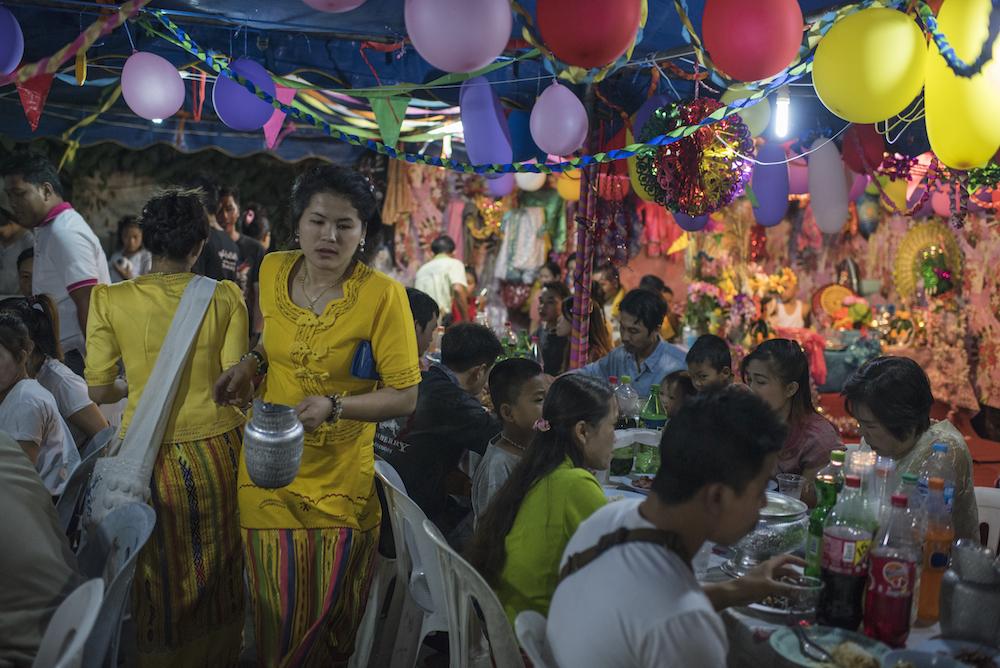
Buddhist devotees celebrate the three-day ritual in the northern Thai city of Chiang Mai. (Vincenzo Floramo / Frontier)
This is the most emotional and intense moment of the celebration because it is when the boys are separated from their parents to live temporarily as monks.
After being ordained during the Poy Sang Long festival, the novices usually wear robes for between three days and a week, and sometimes for longer. Asked about his experience of the festival, Pau Son Kula said: “I enjoyed the ceremony and the festival very much, but I think a monk’s life must be a little hard.”
On the morning after their ordination, the novices wake early and accompany a senior monk on the traditional barefoot walk through the city to receive offerings from devotees.
Walking without shoes on hard, gritty tarmac for the first time is probably one of the most memorable experiences the boys will have during their brief sojourn as novice monks.


